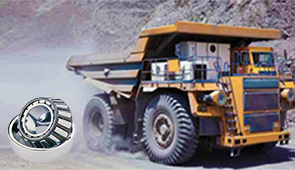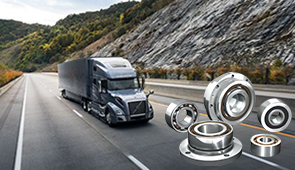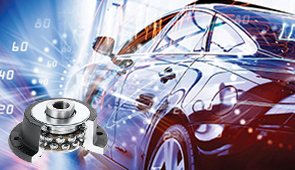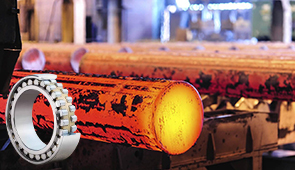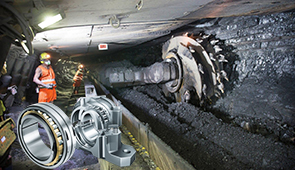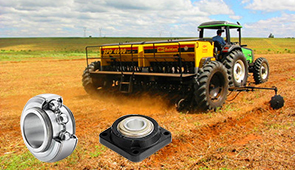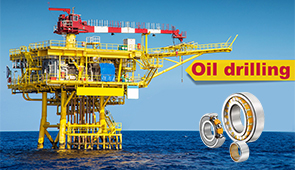Ball Bearings vs Roller Bearings: Understanding the Difference Between These Essential Types of Bearings
Bearings are fundamental components in countless mechanical systems, facilitating smooth motion, reducing friction, and supporting load-bearing tasks in a variety of industries. Among the wide range of bearing types, ball bearings, and roller bearings are two of the most commonly utilized. Each type is designed with specific characteristics suited to particular applications, and understanding their differences is essential for selecting the right bearing for a given task. This article provides a detailed examination of ball bearings and roller bearings, comparing their structural designs, operational principles, strengths, and limitations to help readers better comprehend their functionality and appropriate uses. Whether you’re involved in engineering, manufacturing, or equipment maintenance, having a clear understanding of these two types of bearings is crucial for optimizing performance and ensuring system longevity.
What Types of Loads Can Ball Bearings vs Roller Bearings Handle?
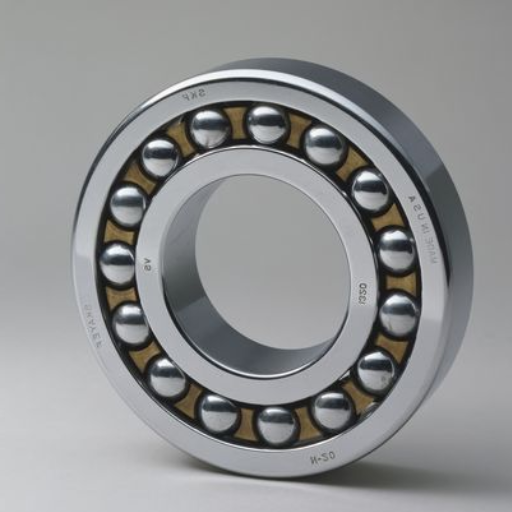
How Ball Bearings Perform Under Radial and Axial Loads
A bearing system combines both radial and axial loads as they operate, while frictional forces are reduced by the rotational motion of the spherical rolling elements. Their performance peaks with radial loads higher than axial loads. These loads are lighter because of their geometry, which consists of point-contact features located in the concentric sphere. The surface that contacts with another surface or object’s surface creates a contact patch, reducing wear. Although it reduces wear, it also decreases the ability to work with heavy loads.
- Radial Load Capacity: These are loads that a shaft can support in a perpendicular direction. Radial load depends on the type and size of the bearing, the material from which it is made, and the conditions under which it is working. For standard ball bearings, radial load capabilities range widely. However, it is safe to say that smaller bearings can withstand approximately 2,000 lbs and bigger industrial bearings can withstand many tens of thousands of pounds.
- Axial Load Capacity: These loads are aligned parallel to the shaft causing limited contact with the bearing. This leads to less axial force applies when compared to radial force. As previously stated, it is only a fraction of the radial capacity due to lack of sufficient contact area perpendicular to the shaft.
- Friction Coefficient: For ball Bearings, the coefficient of friction is low, 0.0005-0.002. This contributes greatly to energy loss or the generation of heat.
- Operating Speeds: A ball bearing is ideal for use in high speed applications. In precision systems, the rotational speed can frequently exceed 10,000 RPM depending on lubrication and thermal restrictions.
All things considered, ball bearings are flexible but are most effective in applications where the loading forces are counterbalanced, and neither excessive radial loading nor heavy axial loading is experienced.
Why Roller Bearings Excel at Handling Heavy Loads
Roller bearings are increasingly efficient for heavy loads owing to the larger surface area contact between their rolling elements and the raceways. Unlike ball bearings, which have point contact, roller bearings benefit from line contact. This enables them to support greater loads which is ideal for applications that include high radial loads as well as combinations of radial and axial loads.
- Contact mechanics: In contrast to ball bearings, the line contact of rollers distributes forces over a broader surface area yielding low surface stress.
- Material Properties: Ingrained with very high steel alloys of over 200,000 psi of tensile strength common roller bearings robust against severe load conditions and deformation.
- Dynamic and Static Load Ratings: Unlike static ratings, dynamic load ratings exceed 1,000 kN for large industrial applications, which roller bearings possess. This enables them to perform heavy-duty operations such as cranes and turbines.
- Bearing Types and Dimensions: Optimized handling of directional and misaligned loads is facilitated with the aid of thick cylindrical, tapered, and spherical roller bearings.
Robust load-bearing performance, exceptional reliability, and suitable longevity under demanding conditions make roller bearings the superior choice.
Comparing Load Capacity Between Different Bearing Types
While evaluating the load capacity of various types of bearings, it is important to consider their radial and axial load-bearing capabilities along with bearing efficiency measurements such as Dynamic Load Rating (C) and Static Load Rating (C₀). These factors are significant in determining the adequacy of a bearing concerning certain working conditions.
- Cylindrical Roller Bearings: With their line contact rolling elements, these bearings have good radial load capability. However, their limited capability for accommodating axial loads means that they are best applied in cases in which they are subjected to predominately radial loads. These bearings tend to have a very high Dynamic Load Rating that justifies their maximum radial capacity, which is usually between 50-500 kN depending on type and design.
- Tapered Roller Bearings: Tapered roller bearings are able to meet the simultaneous radial and axial load requirements and are therefore suitable for applications that require loads simultaneously. The design permits axial loads that are proportional to the contact angles and can be increased when the angle is steeper. For average sized units, nominal levels of axial capacity are similar to their radial capacity, ranging from 30-300 kN.
- Spherical Roller Bearings: These bearings are very efficient for managing loads that are both misaligned and heavily radial as well as moderately axial. They are self-aligning and therefore have a functional operational reliability regarding improper installations. Typical static and dynamic load capacities with these bearings are around 1000kN, which, depending on the scale of the application, justifies their frequent use in heavy industries like mining or material processing.
Users can ensure reliability and efficiency with reliable and efficient machinery by optimizing performance and longevity with the appropriate bearing type and its strengths to the application’s operational requirements. The selection should consider not just load ratings, but operational speeds, alignment tolerances, and the expected working conditions as well.
What Are the Various Types of Roller Bearings and Ball Bearings?

Exploring Cylindrical, Tapered, and Spherical Roller Bearings
Cylindrical roller bearings have a high radial load capacity which makes these bearings suitable for use in heavy radial bearings applications. They can support small amounts of axial loads, especially if the bearings are provided with flanges. Their primary technical requirements such as load rating (dynamic and static), limiting speed due to material and lubricant confiscation, and their tolerance class (ISO P0 to P4) are covered. Many of these bearings are used in gearboxes, electric motors, and basic machines.
Due to the geometry of the conical roller and raceway, tapered roller bearings can manage combined (radial and axial) loads. These types of bearings are very useful for applications with large thrust loads like automotive wheel hubs and other industrial equipment. Additional important factors include the contact angle, having a great influence on the axial load capacity of the bearing, and the applied preload to achieve vibration reduction and proper bearing alignment. Most of these bearings operate under moderate speeds with installation error tending to greatly reduce bearing performance.
Spherical roller bearings are designed to support a large radial and axial force and aid in correcting misalignment. Their ability to self-center makes them suitable for use in scenarios where shaft bending or housing misalignment takes place, like in conveyor systems or big rotating machines. Important features are the available self-alignment angle (normally up to 2 degrees), the amount of axial load they sustain, and operational temperature limits due to materials used and lubrication employed. These bearings sustain functionality in environments where there is a need for constant changing of loads and extreme conditions.
When to Use Needle Roller Bearings for Specific Applications
Lower space and bearing173 through usage of roller bearings in composite design with larger load capacities, such as for shafts with tapered roller bearings. Such systems having radial constraint yet requiring significant radial load are best suited. These slender rollers have aided in achieving greater contact area and thereby achieving efficient load distributions causing reduced stresses.
- Load Capacity: Knife edge bearings have great efficient for sustaining significant radial loads, however enable lesser ability for axial loads unlike other class of bearings.
- Dimensional Constraints: Best bearing subset for systems having constraints in radial space enabling smaller diameter without performance sufferance.
- Rotational Speed: Bearable for mid ranges and high ranges of speed, upper limit on speed however is dependent on lubrication and composition.
- Temperature Range: Works efficiently on temperatures from -20 degrees to 150C with good lubrication.
- Clearance and Alignment: Allowable for a low level of misalignment or lack there of, with installation needing to be strongly accurate for effective functionality.
Their use in automotive gear transmission, pumps, skilful designs agronomical machinery provides space and economic efficient cost performing unparalleled worlds which limits applicative confidence.
How Do Speed and Friction Compare Between Ball and Roller Bearings?
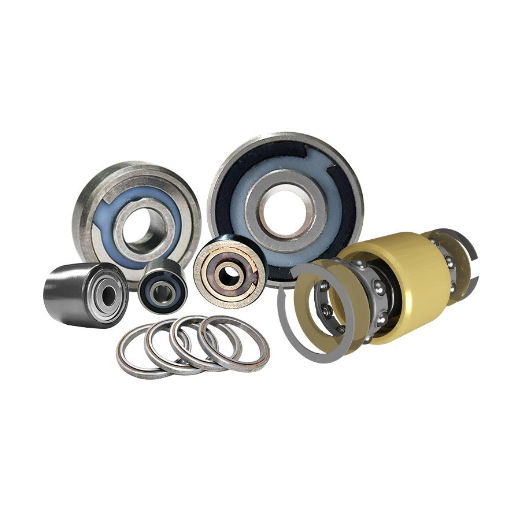
Why Ball Bearings Are Ideal for High-Speed, Low-Friction Applications
The features of ball bearings make them ideal candidates for high-speed and low-friction applications because of their shape and means of contact. The primary technical aspect is the rolling contact of the balls onto the raceways which further keeps the interaction area very small. As a result, frictional losses are drastically decreased. This allows ball bearings to be optimally placed in situations where speed is needed while wasting little energy.
- Contact Type: Friction which is heat generating comes from Point contact (as opposed to line or surface contact in roller bearings).
- Friction Coefficient: It usually stays between 0.001 and 0.005, depending on lubrication and the material used.
- Rotational Speed: Performance and efficiency are still kept when ball bearings are rotated, which can exceed 10,000 RPM in some configurations.
- Precision Class: High-speed ball bearings are usually made in precision classes ABEC-5 or higher due to less uncontrolled vibration and more ideal load distribution.
- Lubrication Requirements: Friction during operation is kept low and overheating is not likely thus little but routine lubrication is needed.
These qualities allow for use in AC generators, turbines, and instruments which need precision, reliability, efficiency, and speed. Materials, lubrication, and alignment greatly increase performance and ensure longevity in high-demand settings.
Understanding How Roller Bearings Minimize Friction Under Heavy Loads
Roller bearings are tailored to accommodate high radial and axial loads while minimizing friction through a peculiarity of mechanical proficiency and materials science. Alongside the features of their design, their friction rolling contact, which consists of cylindrical rolling elements, covers a larger portion of the surface than that of ball bearings. This disperses the load and enables smoother operation under heavy loads.
- Contact Area: Since the roller bearings have line contact with the raceways as opposed to the point contact with ball bearings, the contact stress is lower, making them comparatively more proficient in handling heavy loads.
- Material Composition: Hardened steel and ceramic with well-known excellent worn-out and thermal stability are utilized in high-number performance roller bearings due to deformation and frictional forces.
- Lubrication Systems: Modern lubrication techniques, such as grease or oil-based lubricants with other ingredients, improve the lubricant/air friction factor, particularly for extreme loads.
- Alignment Accuracy: Correct positioning within the housing prevents load misdistribution that would cause excessive wear due to misalignment friction.
- Surface Finish: The components of the devices are ground and polished to a high degree of accuracy so that their surfaces become less rough. The decrease in roughness helps to cut down frictional losses.
These technical features facilitate the efficient functioning of roller bearings under high loads, thus enhancing durability and efficiency in industrial machinery, heavy transport systems, and energy-producing devices.
What Are the Maintenance and Lifespan Differences Between These Bearing Types?
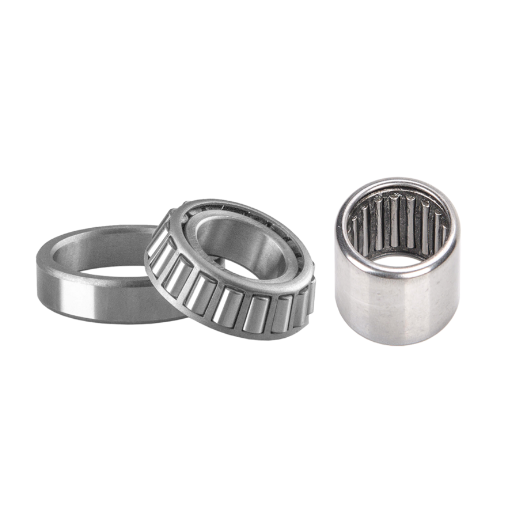
Comparing the Durability of Ball Bearings and Roller Bearings
Due to minimal friction and heat generation from point contact designs, ball bearings tend to be more efficient in operations involving high speeds and lower loads. However, under such beneficial conditions, the point contact develops larger stress concentrations, which makes ball bearings prone to wear and fatigue under excessive load conditions.
In contrast, roller bearings can efficiently respond to heavier radial and axial loads as opposed to ball bearings because of their line contact with raceways. Such demands would be continuous heavy load or shock forces, in which case these bearings would outperform the ball type. On another note, these roller bearings are also able to distribute loads evenly alongside reducing stress concentration, which makes them more suitable than the ball type.
- Load Capacity: Roller bearings outperform ball bearings in both static and dynamic capacities. The latter remains efficient for low applications, but his resistance is incentivized by minimal load.
- Speed Ratings: Roller bearings perform moderately efficiently under heavy loads, in which case ball bearings tend White Frictional resistance: Roller bearings overcome friction to support speed over ball bearings, alongside higher speeds.
- Material Fatigue Limits: With their increased area, roller bearings are superior for material fatigue against high stress as they endure less stress per unit area.
- Service Intervals: In situations of exceptionally high load, ball bearings may need maintenance more often than in the case of roller bearings which, albeit more durable, may need gentle lubrication because of the higher interaction between surfaces.
Taking those factors into account, the right choice of bearing type guarantees the best results and durability in given engineering systems.
Maintenance Requirements for Different Types of Bearings
To maintain the effectiveness of bearing functionalities, and their corresponding service life, specific maintenance procedures are needed for different bearing types and the context in which they function.
Ball Bearings
- Lubrication Inspection: Checkups should be done regularly with re-lubrication ranging between 500 to 2000 hours of operation based on the speed and load rating (10,000-50,000 RPM).
- Environmental Measures: In dusty or contaminated areas, protective seals are useful for covering gaps to prevent ingress and mitigate wear.
- Operational Heat: Unduly excessive Work, and outside the limits set by the manufacturer (-20°C to 120°C) must be avoided, as it could lead to negative materials and lubricant degradation.
Roller Bearings
- Inspection Several Type: Maintenance intervals are longer, roughly every 1000 to 3000 hours under heavy load due to their robust design.
- Lubrication Other Type: Employs higher viscosity lubricants due to higher surface interaction.
- Load and Alignment Restrictions: Allowable 0.03 radians and greater can lead to abnormal wear patterns attributable to failure.
For all bearings, wear signs such as abnormal increases in vibration and the general sound of a bearing signal likely failures that must be checked. These bearings can last longer if proper maintenance schedules, lubricants of high quality, and standard alignment procedures are abided by.
How Do Cost and Performance Value Compare Between Ball and Roller Bearings?
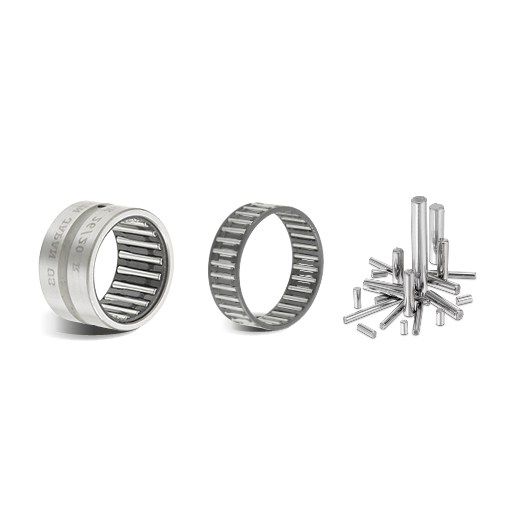
Understanding the Price Differences Between Bearing Types
A close look at the price differences of ball and roller bearings reveals significant differences in their designs, material needs, and specific purposes they are needed for. The general cost of ball bearings is lower as they possess simpler structures, are lightweight, andare suitable for dealing with less radial and axial loads. In contrast, roller bearings are more costly due to their sturdy design which enables them to carry heavier loads, as well as increased durability under strenuous operating conditions.
In terms of technology, ball bearings are the best choice for applications with high-speed rotation because they have lower friction coefficients. On the other hand, roller bearings are more favorable where durability and high load support are needed, as they have a larger contact area, which helps in better force distribution.
- Load Capacity: With their elongated rolling elements, roller bearings are capable of taking both radial and axial loads more than ball bearings.
- Speed Limit: Unlike roller bearings, ball bearings can withstand higher speeds due to their low contact friction.
- Material Costs: Roller bearings are higher priced because they are made of high-grade steel or specialty materials.
- Wear Resistance: Under heavy loads, roller bearings have shown a lesser rate of resistance which increases their overall cost but provides greater operational longevity.
In conclusion, the tradeoff from both types of bearings depend on a balance between performance and financial goals while considering specific techniques and application demands.
Analyzing the Long-Term Value of Ball Bearings vs Roller Bearings
When evaluating the performance of ball bearings relative to roller bearings, I pay close attention to the application-specific technological needs as well as the operational requirements. In applications where low operating friction, high speeds, and low need for maintenance are imperative, ball bearings are generally preferable because of their smoother operation and lower sources of heat. However, roller bearings, even though they require a larger investment upfront, will most probably prove to be more economical in the long run because they can withstand heavy radial or axial loads over time, demonstrating greater durability and wear resistance than ball bearings.
- Load Capacity (Radial and Axial): Roller bearings typically have a greater load-bearing capacity due to the lineal contact area provided; ball bearings with their dramatic point area of contact are optimal for moderate loads.
- Speed Limit: Ball bearings are not as easily damaged by heat because they generate much less friction than roller bearings; this allows them to be spun at high rates, which keeps them free from a buildup of wear.
- Lubrication Needs: Roller bearings may need periodic lubrication more often than other types of bearings to meet expected results on durability and performance.
- Operational Lifespan: With the same level of expected care, roller bearings have a sense of economic advantage during periods of increased heavy loads, thus accounting for the added cost.
The bottom line is, I try my best to incorporate all factors to align performance while taking into consideration the cost and lifespan that the best option will utilize.
Frequently Asked Questions (FAQs)
Q: What is the difference between ball and roller bearings?
A: The main difference between ball and roller bearings is their contact geometry. Ball bearings use spherical balls as rolling elements, creating point contact with the races, resulting in low friction but limited load capacity. Roller bearings use cylindrical, tapered, or spherical rollers that create line contact, allowing them to handle heavier loads but with slightly higher friction. Ball bearings generally offer higher speed capabilities, whereas roller bearings provide greater load-bearing capacity and are better suited for applications with heavy radial or axial loads.
Q: What are the common types of ball bearings?
A: There are several types of ball bearings designed for different applications. Deep groove ball bearings are the most common, suitable for moderate radial and axial loads. Angular contact ball bearings are designed to handle combined loads. Self-aligning ball bearings can accommodate misalignment between the shaft and housing. Thrust ball bearings specifically handle axial loads. Double-row ball bearings offer increased radial load capacity. Each type has unique characteristics making them suitable for specific applications based on load requirements, speed capabilities, and operating conditions.
Q: What are cylindrical roller bearings and when are they used?
A: Cylindrical roller bearings feature cylinder-shaped rolling elements that provide line contact with the raceways. They are primarily designed to handle heavy radial loads while allowing for relatively high rotational speeds. These bearings are often used in applications where radial load capacity is critical, such as electric motors, pumps, gearboxes, and industrial machinery. They provide low friction and high stiffness, making them ideal for precision equipment. Cylindrical roller bearings are also available in several configurations, including single-row, double-row, and four-row designs, depending on the load requirements.
Q: What is the difference between radial ball bearings and thrust bearings?
A: Radial ball bearings are designed primarily to handle loads perpendicular to the shaft (radial loads) and some axial loads. They feature balls arranged in a circular pattern between inner and outer rings. Thrust bearings, on the other hand, are specifically designed to handle axial loads (forces parallel to the shaft). Thrust ball bearings use balls as rolling elements arranged in a flat configuration, while thrust roller bearings use cylindrical or tapered rollers. The primary difference is in their load orientation capability – radial bearings support loads perpendicular to the shaft axis, while thrust bearings support loads parallel to the shaft axis.
Q: When would roller bearing vs ball bearing be the preferred choice?
A: Roller bearings are preferred when handling heavy loads, especially in industrial machinery, automotive applications, and heavy equipment where load capacity is crucial. They’re ideal for applications with shock loading or where deflection must be minimized. Ball bearings are preferred for high-speed applications, precision equipment, and situations requiring low friction and quiet operation. Ball bearings are often used in electric motors, household appliances, skateboards, and bicycles. The choice between roller and ball bearings depends on factors including load type (radial vs axial), load magnitude, speed requirements, space constraints, precision needs, and cost considerations.
Q: How do self-aligning ball bearings differ from other ball bearing types?
A: Self-aligning ball bearings feature a spherical outer raceway, allowing the bearing to “self-align” and compensate for misalignment between the shaft and housing. This makes them unique compared to other ball-bearing types like deep grooves or angular contact bearings. They can accommodate angular misalignment up to 2-3 degrees, making them ideal for applications where shaft deflection occurs or where precise alignment is difficult to maintain. While they offer this advantage, self-aligning ball bearings typically have lower load capacities than comparable roller bearings and are used in agricultural equipment, conveyor systems, and applications where mounting surfaces may not be perfectly aligned.
Q: What loads can ball bearings and roller bearings handle?
A: Ball bearings can support moderate radial and axial loads, with point contact between balls and raceways making them ideal for high-speed, low-to-medium load applications. They typically handle loads up to 30% of equivalent-size roller bearings. Roller bearings can handle significantly higher loads due to their line contact geometry. Cylindrical roller bearings excel at heavy radial loads, tapered roller bearings handle combined radial and axial loads, and spherical roller bearings manage heavy loads with misalignment. Generally, roller bearings can handle 2-3 times more load than similarly sized ball bearings, making them essential for heavy machinery, automotive applications, and industrial equipment.
Q: What are the advantages of angular contact ball bearings?
A: Angular contact ball bearings are designed with raceways that are offset to allow them to handle combined radial and axial loads effectively. Their primary advantages include the ability to support axial loads in one direction, high precision, high-speed capabilities, and lower friction compared to roller bearings. These bearings also provide high stiffness and accuracy, making them ideal for machine tool spindles, centrifugal pumps, compressors, and other equipment requiring precision. They’re available in single-row and double-row configurations, with the latter providing higher load capacity. Angular contact ball bearings are preferred in applications requiring both high speed and the ability to handle combined loading conditions.
UCTH213-40J-300 with Setscrew(inch)
CNSORDERNO: Normal-duty(2)
TOGN: UCTH213-40J-300
SDI: B-R1/8
SD: 2 1/2
UCTH212-39J-300 with Setscrew(inch)
CNSORDERNO: Normal-duty(2)
TOGN: UCTH212-39J-300
SDI: B-R1/8
SD: 2 7/16
UCTH212-38J-300 with Setscrew(inch)
CNSORDERNO: Normal-duty(2)
TOGN: UCTH212-38J-300
SDI: B-R1/8
SD: 2 3/8
UCTH212-36J-300 with Setscrew(inch)
CNSORDERNO: Normal-duty(2)
TOGN: UCTH212-36J-300
SDI: B-R1/8
SD: 2 1/4
UCTH211-35J-300 with Setscrew(inch)
CNSORDERNO: Normal-duty(2)
TOGN: UCTH211-35J-300
SDI: B-R1/8
SD: 2 3/16
UCTH211-34J-300 with Setscrew(inch)
CNSORDERNO: Normal-duty(2)
TOGN: UCTH211-34J-300
SDI: B-R1/8
SD: 2 1/8









